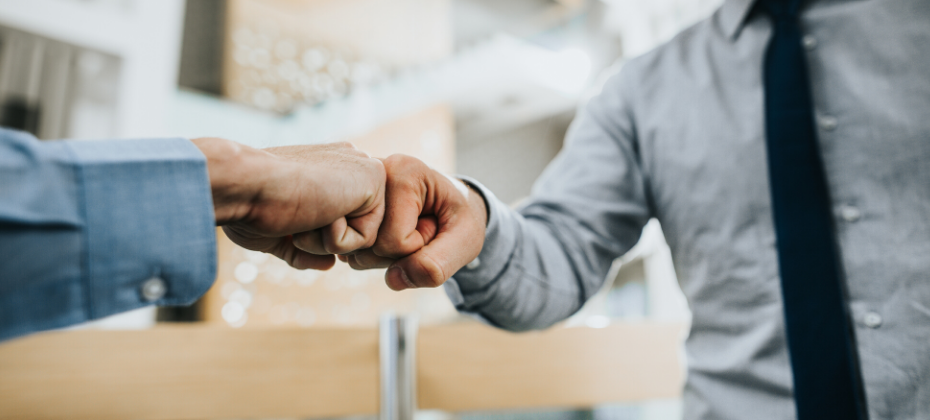Tag: fraud

The response to the coronavirus (COVID-19) health crisis requires a brand-new mindset from businesses across the country. As part of our recently launched Q&A perspective series, Jim Bander, Market Lead of Analytics and Optimization and Kathleen Peters, Senior Vice President of Fraud and Identity, provided insight into how businesses can work to mitigate fraud and portfolio risk. Q: How can financial institutions mitigate fraud risk while monitoring portfolios? JB: The most important shift in portfolio monitoring is the view of the customer, because it’s very different during times of crisis than it is during expansionary periods. Financial institutions need to take a holistic view of their customers and use additional credit dimensions to understand consumers’ reactions to stress. While many businesses were preparing for a recession, the economic downturn caused by the coronavirus has already surpassed the stress-testing that most businesses performed. To help mitigate the increased risk, businesses need to understand how their stress testing was performed in the past and run new stress tests to understand how financially sound their institution is. KP: Most businesses—and particularly financial institutions—have suspended or relaxed many of their usual risk mitigation tools and strategies, in an effort to help support customers during this time of uncertainty. Many financial institutions are offering debt and late fee forgiveness, credit extensions, and more to help consumers bridge the financial gaps caused by the economic downturn. Unfortunately, the same actions that help consumers can hamstring fraud prevention efforts because they impact the usual risk indicators. To weather this storm, financial institutions need to pivot from standard risk mitigation strategies to more targeted fraud and identity strategies. Q: How can financial institutions’ exposure to risk be managed? JB: Financial institutions are trying to extend as much credit as is reasonably possible—per government guidelines—but when the first stage of this crisis passes, they need to be prepared to deal with the consequences. Specifically, which borrowers will actually repay their loans. Financial institutions should monitor consumer health and use proactive outreach to offer assistance while keeping a finger on the pulse of their customers’ financial health. For the foreseeable future, the focus will be on extending credit, not collecting on debt, but now is the time to start preparing for the economic aftermath. Consumer health monitoring is key, and it must include a strategy to differentiate credit abusers and other fraudsters from overall good consumers who are just financially stressed. KP: As financial institutions work to get all of their customers set up with online and mobile banking and account access, there’s an influx of new requests that all require consumer authentication, device identification, and sometimes even underwriting. All of this puts pressure on already strained resources which means increased fraud risk. To manage this risk, businesses need to balance customer experience—particularly minimizing friction—with vigilance against fraudsters and reputational risk. It will require a robust and flexible fraud strategy that utilizes automated tools as much as possible to free up personnel to follow up on the riskiest users and transactions. Experian is closely monitoring the updates around the coronavirus outbreak and its widespread impact on both consumers and businesses. We will continue to share industry-leading insights to help financial institutions manage their portfolios and protect against losses. Learn more About Our Experts: [avatar user="jim.bander" /] Jim Bander, Market Lead, Analytics and Optimization, Experian Decision Analytics, North America Jim joined Experian in April 2018 and is responsible for solutions and value propositions applying analytics for financial institutions and other Experian business-to-business clients throughout North America. He has over 20 years of analytics, software, engineering and risk management experience across a variety of industries and disciplines. Jim has applied decision science to many industries, including banking, transportation and the public sector. [avatar user="kathleen.peters" /] Kathleen Peters, Vice President, Fraud and Identity, Experian Decision Analytics, North America Kathleen joined Experian in 2013 to lead business development and international sales for the recently acquired 41st Parameter business in San Jose, Calif. She went on to lead product management for Experian’s fraud and identity group within the global Decision Analytics organization, launching Experian’s CrossCore® platform in 2016, a groundbreaking and award-winning new offering for the fraud and identity market. The last two years, Kathleen has been named a “Top 100 Influencer in Identity” by One World Identity (OWI), an exclusive list that annually recognizes influencers and leaders from across the globe, showcasing a who’s who of people to know in the identity space.

For the last several years, as the global economy flourished, the opportunities created by removing friction and driving growth guided business strategies governing identity and fraud. The amount of profitable business available in a low-friction environment simply outweighed the fraud that could be mitigated with more stringent verification methods. Now that we’re facing a global crisis, it’s time to reconsider the approach that drove the economic boom that defined that last decade. Recognizing how economic changes impact fraud At the highest level, we separate fraud into two types; third party fraud and first party fraud. In simple terms, third party fraud involves the misuse of a real customer’s identity or unauthorized access to a real customer’s accounts or assets. First party fraud involves the use of an identity that the fraudster controls—whether it’s their own identity, a manipulated version of their own identity, or a synthetic identity that they have created. The important difference in this case is that the methods of finding and stopping third party fraud remain constant even in the event of an economic downturn – establish contact with the owner of the identity and verify whether the events are legitimate. Fraud tactics will evolve, and volumes increase as perpetrators also face pressure to generate income, but at the end of the day, a real person is being impersonated, and a victim exists that will confirm when fraud is taking place. Changes in first party fraud during an economic downturn are dramatically different and much more problematic. The baseline level of first party fraud using synthetic, manipulated and the perpetrator’s own identity continue, but they are augmented by real people facing desperate circumstances and existing “good” customers who over-extend while awaiting a turn-around. The problem is that there is no “victim” to confirm fraud is occurring, and the line between fraud (which implies intent) and credit default (which does not) becomes very difficult to navigate. With limited resources and pressures of their own, at some point lenders must try to distinguish deliberate theft from good customers facing bad circumstances and manage cases accordingly. The new strategy When times are good, it’s easier to build up a solid book of business with good customers. Employment rates are high, incomes are stable, and the risks are manageable. Now, we’re experiencing rapidly changing conditions, entire industries are disrupted, unemployment claims have skyrocketed and customers will need assistance and support from their lenders to help them weather the storm. This is a reciprocal relationship – it behooves those same lenders to help their customers get through to the other side. Lenders will look to limit losses and strengthen relationships. At the same time, they’ll need to reassess their existing fraud and identity strategies (among others) as every interaction with a customer takes on new meaning. Unexpected losses We’ve all been bracing for a recession for a while. But no one expected it to show up quite like it did. Consumers who have been model customers are suddenly faced with a complete shift in their daily life. A job that seemed secure may be less so, investments are less lucrative in the short term, and small business owners are feeling the pressure of a change in day-to-day commerce. All of this can lead to unexpected losses from formerly low-risk customers. As this occurs, it becomes more critical than ever to identify and help good customers facing grim circumstances and find different ways to handle those that have malicious intent. Shifting priorities When the economy was strong, many businesses were able to accept higher losses because those losses were offset by immense growth. Unfortunately, the current crisis means that some of those policies could have unforeseen consequences. For instance – the loss of the ability to differentiate between a good customer who has fallen on hard times and someone who’s been a bad actor from the start. Additionally, businesses need to revise their risk management strategies to align with shifting customer needs. The demand for emergency loans and will likely rise, while loans for new purchases like cars and homes will fall as consumers look to keep their finances secure. As the need to assist customers in distress rises and internal resources are stressed, it’s critical that companies have the right tools in place to triage and help customers who are truly in need. The good news The tools businesses like yours need to screen first party fraud already exist. In fact, you may already have the necessary framework in place thanks to an existing partnership, and a relatively simple process could prepare your business to properly screen both new and existing customers at every touchpoint. This global crisis is nowhere near over, but with the right tools, your business can protect itself and your customers from increased fraud risks and losses of all sorts – first party, stolen identities, or synthetic identities, and come out on the other side even stronger. Contact Experian for a review of your current fraud strategy to help ensure you’re prepared to face upcoming challenges. Contact us

This is the second of a three part series of blog posts highlighting key focus areas for your response to the COVID-19 health crisis: Risk, Operations, Consumer Behavior, and Reporting and Compliance. For more information and the latest resources, please visit Look Ahead 2020, Experian’s COVID-19 resource center with the latest news and tools for our business partners as well as links to consumer resources and a risk simulator. To read the introductory post, click here. Strategic Focus on Risk The last recession spurred an industry-wide systemic focus on stressed scenario forecasting. Now’s the time to evaluate the medium- to long-term impacts of the downturn response on portfolio risk measurement. The impact will be wide ranging, requiring recalibration of scorecards and underwriting processes and challenging assumptions related to fees, net interest income, losses, expenses and liquidity. There are critical inputs to understand portfolio monitoring and benchmarking by account types and segments. Higher unemployment across the country is likely. You need a thorough response to successfully navigate the emerging risks. Expanding credit line management efforts for existing accounts is critical. Proactively responding to the needs of your customers will demand a wide range of data and analytics and more frequent and active processes to take action. Current approaches and tools with increased automation may need to be reevaluated. When sudden economic shocks occur, statistical models may still rank-order effectively, while the odds-to-score relationships deteriorate. This is the time to take full advantage of explainable machine learning techniques to quickly calibrate or rebuild scorecards with refreshed data (traditional and alternative) and continue the learning cycle. As your risk management tools are evaluated and refreshed, there are many opportunities to target your servicing strategies where they can produce results. This may take the form of identifying segments exhibiting financial stress that can benefit from deferred payments, loan consolidation or refinancing. It might also involve more typical risk mitigation strategies, such as credit line reduction. There are several scenarios that may emerge over the next nine to 12 months that can offer opportunities to deepen relationships with your customers while managing long-term risk exposure. Optimizing Business Operations One of the most significant impacts to your business is the increase in transaction volumes as a result of the economic shock. We expect material increases in collections, refinancing and hardship programs. These increases are arriving at a time when many businesses have streamlined their teams in concert with periods of low delinquency and credit losses. Additional strain from call center shutdowns and limited staffing can easily overwhelm operations and cause business continuity plans to breakdown. More than ever, the use of digital channels and self-servicing technology are no longer nice-to-haves. Customers expect online access, and efficiency demands automation, including virtual assistants. As more volume migrates to these channels, it’s critical to have the right customer experience and fraud risk controls deployed through flexible, cloud-based systems. Learn More

Originally posted by Experian Global News blog At Experian, we have an unwavering commitment to helping consumers and clients manage through this unprecedented period. We are actively working with consumers, lenders, lawmakers and regulators to help mitigate the potential impact on credit scores during times of financial hardship. In response to the urgent and rapid changes associated with COVID-19, we are accelerating and enhancing our financial education programming to help consumers maintain good credit and gain access to the financial services they need. This is in addition to processes and tools the industry has in place to help lenders accommodate situations where consumers are affected by circumstances beyond their control. These processes will be extended to those experiencing financial hardship as a result of COVID-19. As the Consumer’s Credit Bureau, our commitment at Experian is to inform, guide and protect our consumers and customers during uncertain times. With expected delays in bill payments, unprecedented layoffs, hiring freezes and related hardships, we are here to help consumers in understanding how the credit reporting system and personal finance overall will move forward in this landscape. One way we’re doing this is inviting everyone to join our special eight-week series of #CreditChat conversations surrounding COVID-19 on Wednesdays at 3 p.m. ET on Twitter. Our weekly #CreditChat program started in 2012 to help the community learn about credit and important personal finance topics (e.g. saving money, paying down debt, improving credit scores). The next several #CreditChats will be dedicated to discussing ways to manage finances and credit during the pandemic. Topics of these #CreditChats will include methods and strategies for bill repayment, paying down debt, emergency financial assistance and preparing for retirement during COVID-19. “As the consumer’s credit bureau, we are committed to working with consumers, lenders and the financial community during and following the impacts of COVID-19,” says Craig Boundy, Chief Executive Officer of Experian North America. “As part of our nation’s new reality, we are planning for options to help mitigate the potential impact on credit scores due to financial hardships seen nationwide. Our #CreditChat series and supporting resources serve as one of several informational touchpoints with consumers moving forward.” Being fully committed to helping consumers and lenders during this unprecedented period, we’ve created a dedicated blog page, “COVID-19 and Your Credit Report,” with ongoing and updated information on how COVID-19 may impact consumers’ creditworthiness and – ultimately – what people should do to preserve it. The blog will be updated with relevant news as we announce new solutions and tactics. Additionally, our “Ask Experian” blog invites consumers to explore immediate and evolving resources on our COVID-19 Updates page. In addition to this guidance, and with consumer confidence in the economy expected to decline, we will be listening closely to the expert voices in our Consumer Council, a group of leaders from organizations committed to helping consumers on their financial journey. We established a Consumer Council in 2009 to strengthen our relationships and to initiate a dialogue among Experian and consumer advocacy groups, industry experts, academics and other key stakeholders. This is in addition to ongoing collaboration with our regulators. Additionally, our Experian Education Ambassador program enables hundreds of employee volunteers to serve as ambassadors sharing helpful information with consumers, community groups and others. The goal is to help the communities we serve across North America, providing the knowledge consumers need to better manage their credit, protect themselves from fraud and identity theft and lead more successful, financially healthy lives. COVID-19 has impacted all industries and individuals from all walks of life. We want our community to know we are right there with you. Learn more about our weekly #CreditChat and upcoming schedule here. Learn more

Security. Convenience. Personalization. Finding the balance between these three priorities is key to creating a safe and low-friction customer experience. We surveyed more than 6,500 consumers and 650 businesses worldwide about these priorities for our 2020 Global Identity and Fraud Report: Most business are focusing on personalization, specifically in relation to upselling and cross-selling. This is frustrating customers who are looking for increases in both security and convenience. It’s possible to have all three. Read Full Report

It may be a new decade of disruption, but one thing remains constant – the consumer is king. As such, customer experience (and continually evolving digital transformations necessary to keep up), digital expansion and all things identity will also reign supreme as we enter this new set of Roaring 20s. Here are seven of the top trends to keep tabs of through 2020 and beyond. 1. Data that does more – 100 million borrowers and counting Traditional, alternative, public record, consumer-permissioned, small business, big business, big, bigger, best – data has a lot of adjectives preceding it. But no matter how we define, categorize and collate data, the truth is there’s a lot of it that’s untapped, which is keeping financial institutions from operating at their max efficiency levels. Looking for ways to be bigger and bolder? Start with data to engage your credit-worthy consumer universe and beyond. Across the entire lending lifecycle, data offers endless opportunities – from prospecting and acquisitions to fraud and risk management. It fuels any technology solution you have or may want to implement over the coming year. Additionally, Experian is doing their part to create a more holistic picture of consumer creditworthiness with the launch of Experian LiftTM in November. The new suite of credit score products combines exclusive traditional credit, alternative credit and trended data assets, intended to help credit invisible and thin-file consumers gain access to fair and affordable credit. "We're committed to improving financial access while helping lenders make more informed decisions. Experian Lift is our latest example of this commitment brought to life,” said Greg Wright, Executive Vice President and Chief Product Officer for Experian Consumer Information Services. “Through Experian Boost, we're empowering consumers to play an active role in building their credit histories. And, with Experian Lift, we're empowering lenders to identify consumers who may otherwise be excluded from the traditional credit ecosystem,” he said. 2. Identity boom for the next generation Increasingly digital lifestyles have put personalization and frictionless transactions on hyperdrive. They are the expectation, not a nice-to-have. Having customer intelligence will become a necessary survival strategy for those in the market wanting to compete. Identity is not just for marketing purposes; it must be leveraged across the lending lifecycle and every customer interaction. Fragmented customer identities are more than flawed for decisioning purposes, which could potentially lead to losses. And, of course, the conversation around identity would be incomplete without a nod to privacy and security considerations. With the roll-out of the California Consumer Privacy Act (CCPA) earlier this month, we will wait to see if the other states follow suit. Regardless, consumers will continue to demand security and trust. 3. All about artificial intelligence and machine learning We get it – we all want the fastest, smartest, most efficient processes on limited – and/or shrinking – budgets. But implementing advanced analytics for your financial institution doesn’t have to break the bank. And, when it comes to delivering services and messaging to customers the way they want it, how to do that means digital transformation – specifically, leveraging big data and actionable analytics to evaluate risk, uncover industry intel and improve decisioning. One thing’s for certain, financial institutions looking to compete, gain traction and pull away from the competition in this next decade will need to do so by leveraging a future-facing partner’s expertise, platforms and data. AI and machine learning model development will go into hyperdrive to add accuracy, efficiency, and all-out speed. Real-time transactional processing is where it’s at. 4. Customer experience drives decisioning and everything Faster, better, more frictionless. 2020 and the decade will be all about making better decisions faster, catering to the continually quickening pace of consumer attention and need. Platforms and computing language aside, how do you increase processing speed at the same time as increasing risk mitigation? Implementing decisioning environments that cater to consumer preferences, coupled with best-in-class data are the first two steps to making this happen. This can facilitate instant decisioning within financial institutions. Looking beyond digital transformation, the next frontier is digital expansion. Open platforms enable financial institutions to readily add solutions from numerous providers so that they can connect, access and orchestrate decisions across multiple systems. Flexible APIs, single integrations and better strategy and design build the foundation of the framework to be implemented to enhance and elevate customer experience as it’s known today. 5. Credit marketing that keeps up with the digital, instant-gratification age Know your customer may be a common acronym for the financial services industry, but it should also be a baseline for determining whether to send a specific message to clients and prospects. From the basics, like prescreen, to omni-channel marketing campaigns, financial institutions need to leverage the communication channels that consumers prefer. From point of sale to mobile – there are endless possibilities to fit into your consumers’ credit journey. Marketing is clearly not a one-and-done tactic, and therefore multi-channel prequalification offers and other strategies will light the path for acquisitions and cross-sell/up-sell opportunities to come. By developing insights from customer data, financial institutions have a clear line of sight into determining optimal strategies for customer acquisition and increasing customer lifetime value. And, at the pinnacle, the modern customer acquisition engine will continue to help financial institutions best build, test and optimize their customer channel targeting strategies faster than ever before. From segmentation to deployment, and the right data across it all, today and tomorrow’s technology can solve many of financial organizations’ age-old customer acquisition challenges. 6. Three Rs: Recession, regulatory and residents of the White House Last March, the yield curve inverted for the first time since 2007. Though the timing of the next economic correction is debated, messaging is consistent around making a plan of action now. Whether it’s arming your collections department, building new systems, updating existing systems, or adjusting rules and strategy, there are gaps every organization needs to fill. By leveraging the stability of the economy now, financial institutions can put strategies in place to maximize profitability, manage risk, reduce bad debt/charge-offs, and ensure regulatory compliance among their list of to-do’s, ultimately resulting in a more efficient, better-performing program. Also, as we near the election later this year, the regulatory landscape will likely change more than the usual amount. Additionally, we will witness the first accounts of what CECL looks like for SEC-filing financial institutions (and if that will suggest anything for how non-SEC-filing institutions may fare as their deadline inches closer), as well as see the initial implications of the CCPA roll out and whether it will pave a path for other states to follow. As system sophistication continues to evolve, so do the risks (like security breaches) and new regulatory standards (like GDPR and CCPA) which provide reasons for organizations to transform. 7. Focus on fraud (in all forms) With evolving technology, comes evolved fraudsters. Whether it’s loyalty and rewards programs, account openings, breaches, there are so many angles and entry points. Synthetic identity fraud is the fastest-growing type of financial crime in the United States. The cost to businesses is estimated to grow to $1.2 billion by 2020, according to the Aite Group. To ensure the best protection for your business and your customers, a layered, risk-based approach to fraud management provides the highest levels of confidence in the industry. Balance is key – while being compliant with regulatory requirements and conscious of user experience, ensuring consumers’ peace of mind is priority one. Not a new trend, but recognizing fraud and recognizing good consumers will save continue to save financial institutions money and reputational harm, driving significant improvement in key performance indicators. Using the right data (and aggregating multiple data sets) and digital device intelligence tools is the one-two punch to protect your bottom line. For all your needs in 2020 and throughout the next decade, Experian has you covered. Learn more

If you’ve been on the dating scene in the last few years, you’re probably familiar with ghosting. For those of you who aren’t, I’ll save you the trip to Urban Dictionary. “Ghosting” is when the person you’re dating disappears. No calls. No texts. No DMs. They just vanish, never to be heard from again. As troublesome as this can be, there’s a much more nefarious type of ghosting to be wary of – credit ghosting. Wait, what’s credit ghosting? Credit ghosting refers to the theft of a deceased person’s identity. According to the IRS, 2.5 million deceased identities are stolen each year. The theft often occurs shortly after someone dies, before the death is widely reported to the necessary agencies and businesses. This is because it can take months after a person dies before the Social Security Administration (SSA) and IRS receive, share, or register death records. Additionally, credit ghosting thefts can go unnoticed for months or even years if the family of the deceased does not check their credit report for activity after death. Opportunistic fraudsters check obituaries and other publicly available death records for information on the deceased. Obituaries often include a person’s birthday, address or hometown, parents’ names, occupation, and other information regularly used in identity verification. With this information fraudsters can use the deceased person’s identity and take advantage of their credit rating rather than taking the time to build it up as they would have to with other types of fraud. Criminals will apply for credit cards, loans, lines of credit, or even sign up for a cell phone plan and rack up charges before disappearing. Where did this type of identity theft come from? Credit ghosting is the result of a few issues. One traces back to a discrepancy noted by the Social Security’s inspector general. In an audit, they found that 6.5 million Social Security numbers for people born before June 16, 1901, did not have a date of death on record in the administration’s Numident (numerical identification) system – an electronic database containing Social Security number records assigned to each citizen since 1936. Without a date of death properly noted in the database, government agencies and other entities inquiring won’t necessarily know an individual is deceased, making it possible for criminals to implement credit ghosting schemes. Additionally, unreported deaths leave further holes in the system, leading to opportunity for fraudsters. When financial institutions run checks on the identity information supplied by a fraudster, it can seem legitimate. If the deceased’s credit is in good standing, the fraudster now appears to be a good customer—much like a synthetic identity—but now with the added twist that all of the information is from the same person instead of stitched together from multiple sources. It can take months before the financial institution discovers that the account has been compromised, giving fraudsters ample time to bust out and make off with the funds they’ve stolen. How can you defend against credit ghosting? Luckily, unlike your dating pipeline, there are ways to guard against ghosting in your business’ pipeline. Frontline Defense: Start by educating your customers. It’s never pleasant to consider your own passing or that of a loved one, but it’s imperative to have a plan in place for both the short and long term. Remind your customers that they should contact lenders and other financial institutions in the event of a death and continue monitoring those accounts into the future. Relatives of the deceased don’t tend to check credit reports after an estate has been settled. If the proper steps aren’t taken by the family to notify the appropriate creditors of the death, the deceased flag may not be added to their credit report before the estate is closed, leaving the deceased’s information vulnerable to fraud. By offering your customers assistance and steps to take, you can help ensure that they’re not dealing with the fallout of credit ghosting—like dealing with calls from creditors following up after the fraudster’s bust-out—on top of grieving. Backend Defense: Ensure you have the correct tools in place to spot credit ghosts when they try to enter your pipeline. Experian’s Fraud Shield includes high risk indicators and provides a deceased indicator flag so you can easily weed them out. Additionally, you can track other risk indicators like previous uses of a particular Social Security number and identify potential credit-boosting schemes. Speak to an Experian associate today about how you can increase your defenses against credit ghosting. Let's talk

Sometimes, the best offense is a good defense. That’s certainly true when it comes to detecting synthetic identities, which by their very nature become harder to find the longer they’ve been around. To launch an offense against synthetic identity fraud, you need to defend yourself from it at the top of your new customer funnel. Once fraudsters embed their fake identity into your portfolio, they become nearly impossible to detect. The Challenge Synthetic identity fraud is the fastest-growing type of financial crime in the United States. The cost to businesses is hard to determine because it’s not always caught or reported, but the amounts are staggering. According to the Aite Group, it was estimated to total at least $820 million in 2017 and grow to $1.2 billion by 2020. This type of theft begins when individual thieves and large-scale crime rings use a combination of compromised personal information—like unused social security numbers—and fabricated data to stitch together increasingly sophisticated personas. These well-crafted synthetic identities are hard to differentiate from the real deal. They often pass Know Your Customer, Customer Identification Program and other onboarding checks both in person and online. This puts the burden on you to develop new defense strategies or pay the price. Additionally, increasing pressure to grow deposits and expand loan portfolios may coincide with the relaxation of new customer criteria, allowing even more fraudsters to slip through the cracks. Because fraudsters nurture their fake identities by making payments on time and don’t exhibit other risk factors as their credit limits increase, detecting synthetic identities becomes nearly impossible, as does defending against them. How This Impacts Your Bottom Line Synthetic identity theft is sometimes viewed as a victimless crime, since no single individual has their entire identity compromised. But it’s not victimless. When undetected fraudsters finally max out their credit lines before vanishing, the financial institution is usually stuck footing the bill. These same fraudsters know that many financial institutions will automatically settle fraud claims below a specific threshold. They capitalize on this by disputing transactions just below it, keeping the goods or services they purchased without paying. Fraudsters can double-dip on a single identity bust-out by claiming identity theft to have charges removed or by using fake checks to pay off balances before maxing out the credit again and defaulting. The cost of not detecting synthetic identities doesn’t stop at the initial loss. It flows outward like ripples, including: Damage to your reputation as a trusted organization Fines for noncompliance with Know Your Customer Account opening and maintenance costs that are not recouped as they would be with a legitimate customer Mistakenly classifying fraudsters as bad debt write offs Monetary loss from fraudsters’ unpaid balances Rising collections costs as you try to track down people who don’t exist Less advantageous rates for customers in the future as your margins grow thinner These losses add up, continuing to impact your bottom line over and over again. Defensive Strategies So what can you do? Tools like eCBSV that will assist with detecting synthetic identities are coming but they’re not here yet. And once they’re in place, they won’t be an instant fix. Implementing an overly cautious fraud detection strategy on your own will cause a high number of false positives, meaning you miss out on revenue from genuine customers. Your best defense requires finding a partner to help you implement a multi-layered fraud detection strategy throughout the customer lifecycle. Detecting synthetic identities entails looking at more than a single factor (like length of credit history). You need to aggregate multiple data sets and connect multiple customer characteristics to effectively defend against synthetic identity fraud. Experian’s synthetic identity prevention tools include Synthetic Identity High Risk Score to incorporate the history and past relationships between individuals to detect anomalies. Additionally, our digital device intelligence tools perform link analyses to connect identities that seem otherwise separate. We help our partners pinpoint false identities not associated with an actual person and decrease charge offs, protecting your bottom line and helping you let good customers in while keeping false personas out. Find out how to get your synthetic identity defense in place today.

With the growing need for authentication and security, fintechs must manage risk with minimal impact to customer experience. When implementing tactical approaches for fraud risk strategy operations, keeping up with the pace of fraud is another critical consideration. How can fintechs be proactive about future-proofing fraud strategies to stay ahead of savvy fraudsters while maintaining customer expectations? I sat down with Chris Ryan, Senior Fraud Solutions Business Consultant with Experian Decision Analytics, to tap into some of his insights. Here’s what he had to say: How have changes in technology added to increased fraud risk for businesses operating in the online space? Technology introduces many risks in the online space. As it pertains to the fintech world, two stand out. First, the explosion in mobile technology. The same capabilities that make fintech products broadly accessible makes them vulnerable. Anyone with a mobile device can attempt to access a fintech and try their hand at committing fraud with very little risk of being caught or punished. Second, the evolution of an interconnected, digital ‘marketplace’ for stolen data. There’s an entire underground economy that’s focused on connecting the once-disparate pieces of information about a specific individual stolen from multiple, unrelated data breaches. Criminal misrepresentations are more complete and more convincing than ever before. What are the major market drivers and trends that have attributed to the increased risk of fraud? Ultimately, the major market drivers and trends that drive fraud risk for fintechs are customer convenience and growth. In terms of customer convenience, it’s a race to meet customer needs in real time, in a single online interaction, with a minimally invasive request for information. But, serving the demands of good customers opens opportunities for identity misuse. In terms of growth, the pressure to find new pockets of potential customers may lead fintechs into markets where consumer information is more limited, so naturally, there are some risks baked in. Are fintechs really more at risk for fraud? If so, how are fintechs responding to this dynamic threat? The challenge for many fintechs has been the prioritization of fraud as a risk that needs to be addressed. It’s understandable that fintech’s initial emphasis had to be the establishment of viable products that meet the needs of their customers. Obviously, without customers using a product, nothing else matters. Now that fintechs are hitting their stride in terms of attracting customers, they’re allocating more of their attention and innovative spirit to other areas, like fraud. With the right partner, it’s not hard for fintechs to protect themselves from fraud. They simply need to acquire reliable data that provides identity assurance without negatively impacting the customer experience. For example, fintechs can utilize data points that can be extracted from the communications channel, like device intelligence for example, or non-PII unique identifiers like phone and email account data. These are valuable risk indicators that can be collected and evaluated in real time without adding friction to the customer experience. What are the major fraud risks to fintechs and what are some of the strategies that Risk Managers can implement to protect their business? The trends we’ve talked about so far today have focused more on identity theft and other third-party fraud risks, but it’s equally important for fintechs to be mindful of first party fraud types where the owner of the identity is the culprit. There is no single solution, so the best strategy recommendation is to plan to be flexible. Fintechs demonstrate an incredible willingness to innovate, and they need to make sure the fraud platforms they pick are flexible enough to keep pace with their needs. From your perspective, what is the future of fraud and what should fintechs consider as they evolve their products? Fraud will continue to be a challenge whenever something of value is made available, particularly when the transaction is remote and the risk of any sort of prosecution is very low. Criminals will continue to revise their tactics to outwit the tools that fintechs are using, so the best long-term defense is flexibility. Being able to layer defenses, explore new data and analytics, and deploy flexible and dynamic strategies that allow highly tailored decisions is the best way for fintechs to protect themselves. Digital commerce and the online lending landscape will continue to grow at an increasing pace – hand-in-hand with the opportunities for fraud. To stay ahead of fraudsters, fintechs must be proactive about future-proofing their fraud strategies and toolkits. Experian can help. Our Fintech Digital Onboarding Bundle provides a solid baseline of cutting-edge fraud tools that protect fintechs against fraud in the digital space, via a seamless, low-friction customer experience. More importantly, the Fintech Digital Onboarding Bundle is delivered through Experian’s CrossCore platform—the premier platform in the industry recognized specifically for enabling the expansion of fraud tools across a wide range of Experian and third-party partner solutions. Click here to learn more or to speak with an Experian representative. Learn More About Chris Ryan: Christopher Ryan is a Senior Fraud Solutions Business Consultant. He delivers expertise that helps clients make the most from data, technology and investigative resources to combat and mitigate fraud risks across the industries that Experian serves. Ryan provides clients with strategies that reduce losses attributable to fraudulent activity. He has an impressive track record of stopping fraud in retail banking, auto lending, deposits, consumer and student lending sectors, and government identity proofing. Ryan is a subject matter expert in consumer identity verification, fraud scoring and knowledge-based authentication. His expertise is his ability to understand fraud issues and how they impact customer acquisition, customer management and collections. He routinely helps clients review workflow processes, analyze redundancies and identify opportunities for process improvements. Ryan recognizes the importance of products and services that limit fraud losses, balancing expense and the customer impact that can result from trying to prevent fraud.

As the holiday shopping season kicks off, it’s prime time for fraudsters to prey on consumers who are racking up rewards points as they spend. Find out how fraud trends in loyalty and rewards programs can impact your business: Are you ready to prevent fraud this holiday season? Get started today

Experian has been named one of the 10 participants, and only credit bureau, in the initial rollout of the SSA's new eCBSV service.

What do movie actors Adam Sandler and Hugh Grant, jazz singer Michael Bublé, Russian literary giant Leo Tolstoy, and Colonel Sanders, the founder of KFC, have in common? Hint, it’s not a Nobel Prize for Literature, a Golden Globe, a Grammy Award, a trademark goatee, or a “finger-lickin’ good” bucket of chicken. Instead, they were all born on September 9, the most common birth date in the U.S. Baby Boom According to real birth data compiled from 20 years of American births, September is the most popular month to give birth to a child in America – and December, the most popular time to make one. With nine of the top 10 days to give birth falling between September 9 and September 20, one may wonder why the birth month is so common. Here are some theories: Those who get to choose their child’s birthday due to induced and elective births tend to stay away from the hospital during understaffed holiday periods and may plan their birth date around the start of the school year. Several of the most common birth dates in September correspond with average conception periods around the holidays, where couples likely have more time to spend together. Some studies within the scientific community suggest that our bodies may actually be biologically disposed to winter conceptions. While you may not be feeling that special if you were born in September, the actual differences in birth numbers between common and less common birthdays are often within just a few thousand babies. For example, September 10, the fifth most common birthday of the year, has an average birth rate of 12,143 babies. Meanwhile, April 20, the 328th most common birthday, has an average birth rate of 10,714 newborns. Surprisingly, the least common birthdays fall on Christmas Eve, Christmas Day and New Year’s Day, with Thanksgiving and Independence Day also ranking low on the list. Time to Celebrate – but Watch out! Statistically, there’s a pretty good chance that someone reading this article will soon be celebrating their birthday. And while you should be getting ready to party, you should also be on the lookout for fraudsters attempting to ruin your big day. It’s a well-known fact that cybercriminals can use your birth date as a piece of the puzzle to capture your identity and commit identity theft – which becomes a lot easier when it’s being advertised all over social media. It’s also important for employers to safeguard their organization from fraudsters who may use this information to break into corporate accounts. While sharing your birthday with a lot of people could be a good or bad thing depending on how much undivided attention you enjoy – you’re in great company! Not only can you plan a joint party with Michelle Williams, Afrojack, Cam from Modern Family, four people I went to high school with on Facebook and a handful of YouTube stars that I’m too old to know anything about, but there will be more people ringing in your birthday than any other day of the year! And that’s pretty cool.

Digital channels undoubtedly create convenient experiences for consumers. We have the luxury of applying for loans or creating investment accounts from the comfort of home. However, the same opportunities are available to fraudsters. Fraudsters continue to find creative and innovative ways to expose vulnerabilities across all types of businesses. They prey on inexperienced or low-bandwidth teams that have not invested in the appropriate fraud tools in the past. Despite the imminent fraud risk involved, both consumers and businesses continue to embrace digital channels. With 90 percent of consumers worldwide conducting personal banking online, how do we protect these digital platforms with finite resources? A leading digital financial services company was forced to address this question when they experienced a large-scale fraud attack. But they weren’t in this fight alone. Download the full case study to see how our risk analyst used FraudNet to prevent millions of dollars in fraudulent funding. Client: A leading digital financial services company that operates with zero in-person branches with more than 7,000 employees Challenge/Objective: In October 2018, fraudsters deployed a large-scale, scripted attack against a North American financial services company. The fraud team was extremely understaffed. The fraud team was unable to detect and respond to the attack quickly. The fraudulent account opening activities eventually blended into account takeovers. Resolution: Our risk analyst worked quickly to analyze the geolocation, velocity and device rules firing within FraudNet for Account Opening. By having these rules in place, FraudNet was able to flag and outsort thousands of suspicious applications. Despite being a small team, the fraud investigators were able to work efficiently within the FraudNet workbench and review the true, high-risk applications. Results: Thanks to our risk analyst’s quick remediation and the FraudNet proprietary device rules: 23,800 fraudulent applications were outsorted for review. An estimated $35.7 million in fraudulent funding was prevented. However, the fight against fraud is ongoing. Our risk analyst continues to work closely with the fraud team to develop an effective strategy to prepare against future attacks.

If you’ve seen an uptick in photos of friends and celebrities looking older with wrinkles on your social media feeds, you’re not alone. A new free photo editor has taken the internet by a storm, featuring an AI-powered image-altering application that allows users to see their “future self.” All you have to do is upload a single photo (or few) from your camera roll to be enhanced. While this may seem like harmless fun, the app is now making headlines over increased privacy concerns about what occurs behind the scenes once users submit their selfies. Red flags were raised when multiple alleged negative implications were connected to the app – including the app’s ownership and the potential risk that the app downloaded a user’s entire photo album onto their database. In fact, the privacy concerns also prompted Democratic Party officials to implore federal agencies, including the FBI, “to look into the potential national security and privacy risks the phone app poses to the United States.” Since then, the app’s creators have addressed these concerns, stating most of the photo processing occurs in the cloud and most photos are deleted within 48 hours. Additionally, the only photos uploaded are ones that have been personally submitted by the user. Regardless, a database of user-submitted photos could be seen as a goldmine to fraudsters. In a time where personal and biometric data (including facial recognition) are some of the key ways to validate security, it’s important for consumers to be aware of how and where they’re sharing their data, whether it’s for an age-progression photo app, or their financial accounts. Consumers, businesses, financial institutions – everyone – should exhibit caution and take measures to ensure personal information remains secure and is not being used for nefarious reasons. While consumers may be aware that businesses are collecting data, companies should take steps to form digital trust with transparency. This could be achieved by: Educating consumers on how their data is being used Effectively communicating privacy policies and service terms more concisely Helping consumers feel in control of their information To learn more about research that indicates a shift to advanced authentication methods (including biometrics), fraud trends and how to combat them, download our e-book. Download Now

You can do everything you can to prepare for the unexpected. But similar to how any first-time parent feels… you might need some help. Call in the grandparents! Experian has extensive expertise and has been around for a long time in the industry, but unlike your traditional grandparents, Experian continuously innovates, researches trends, and validates best practices in fraud and identity verification. That’s why we explored two prominent fraud reports, Javelin’s 2019 Identity Fraud Study: Fraudsters Seek New Targets and Victims Bear the Brunt and Experian’s 2019 Global Identity and Fraud Report — Consumer trust: Building meaningful relationships online, to help you identify and respond to new trends surrounding fraud. What we found – and what you need to know – is there are trends, technology and tactics that can help and hinder your fraud-prevention efforts. Consider the many digital channels available today. A full 91 percent of consumers transacted online in 2018. This presents a great opportunity for businesses to serve and develop relationships with customers. It also presents a great opportunity for fraudsters as well – as almost half of consumers have experienced a fraudulent online event. Since the threat of fraud is not impacting customers’ willingness to transact online, businesses are held responsible for adapting and evolving to not only protect their customers, but to secure their bottom line. This becomes increasingly important as fraudsters continue to target and expose vulnerabilities across inexperienced lines of businesses. Or, how about passwords. Research has shown that both businesses and consumers have greater confidence in biometrics, but neither is ready to stop using passwords. The continued reliance on traditional authentication methods is a delicate balance between security, trust and convenience. Passwords provide both authentication and consumer confidence in the online experience. It also adds friction to the user experience – and sometimes aggravation when passwords are forgotten. Advanced methods, like physical and behavioral biometrics and device intelligence, are gaining user confidence by both businesses and consumers. But a completely frictionless authentication experience can leave consumers doubting the safeness of their transaction. As you respond and adapt to our ever-evolving world, we encourage you to build and strengthen a trusted relationship with your customers through transparency. Consumers know that businesses are collection data about them. When a business is transparent about the use of that data, digital trust and consumer confidence soars. Through a stronger relationship, customers are more willing to accept friction and need fewer signs of security. Learn more about these and other trends, technology and tactics that can help and hinder your authentication efforts in our new E-book, Upcoming fraud trends and how to combat them.